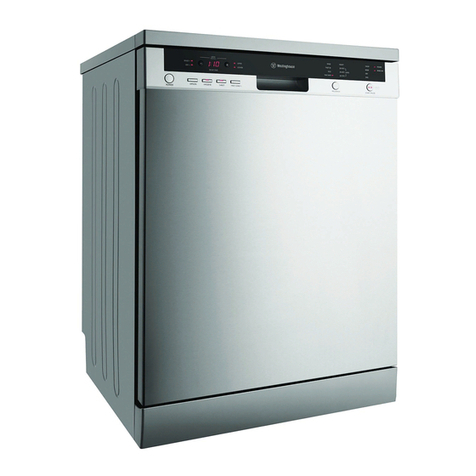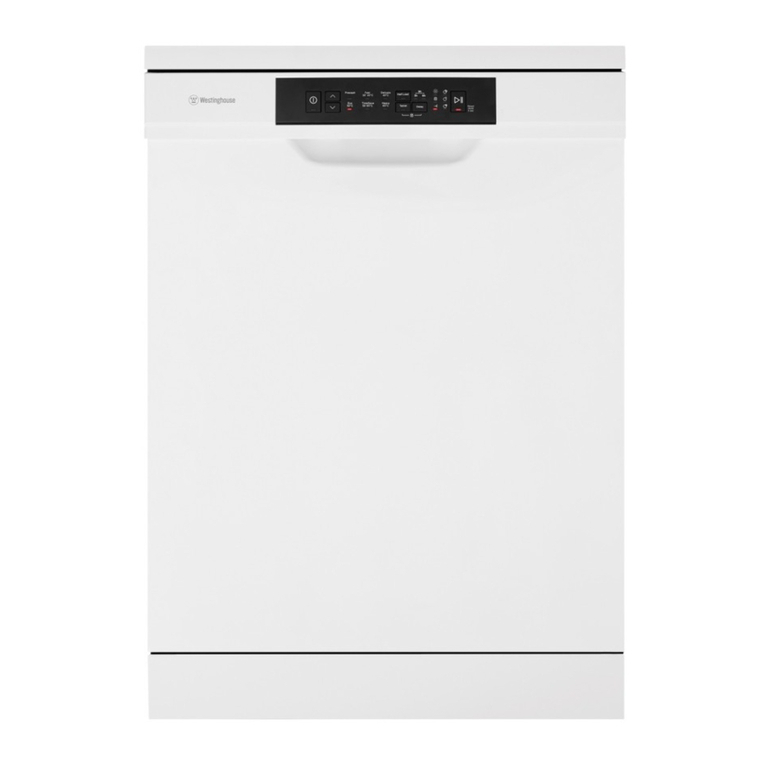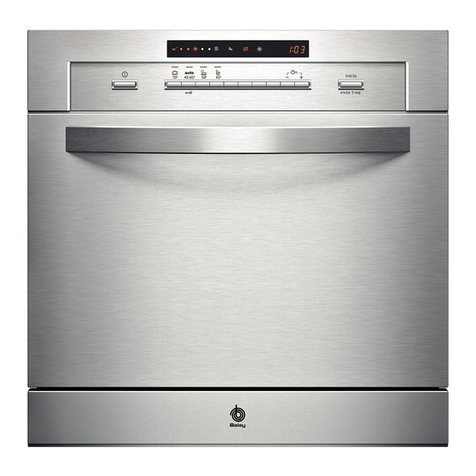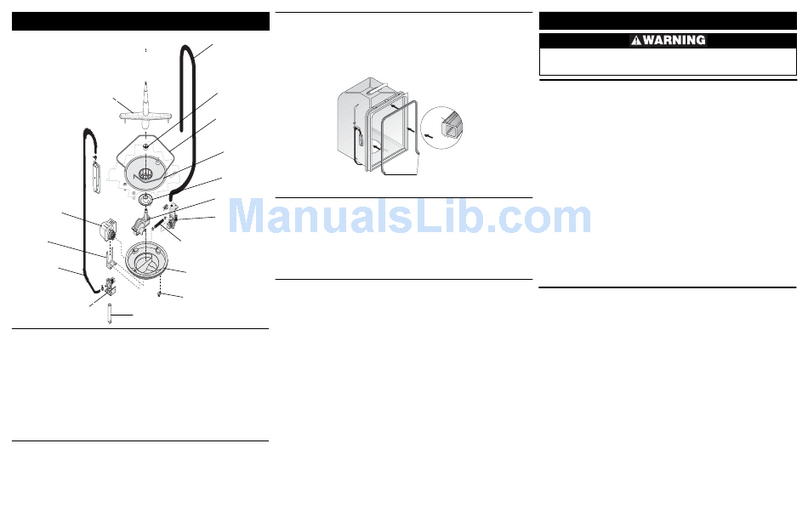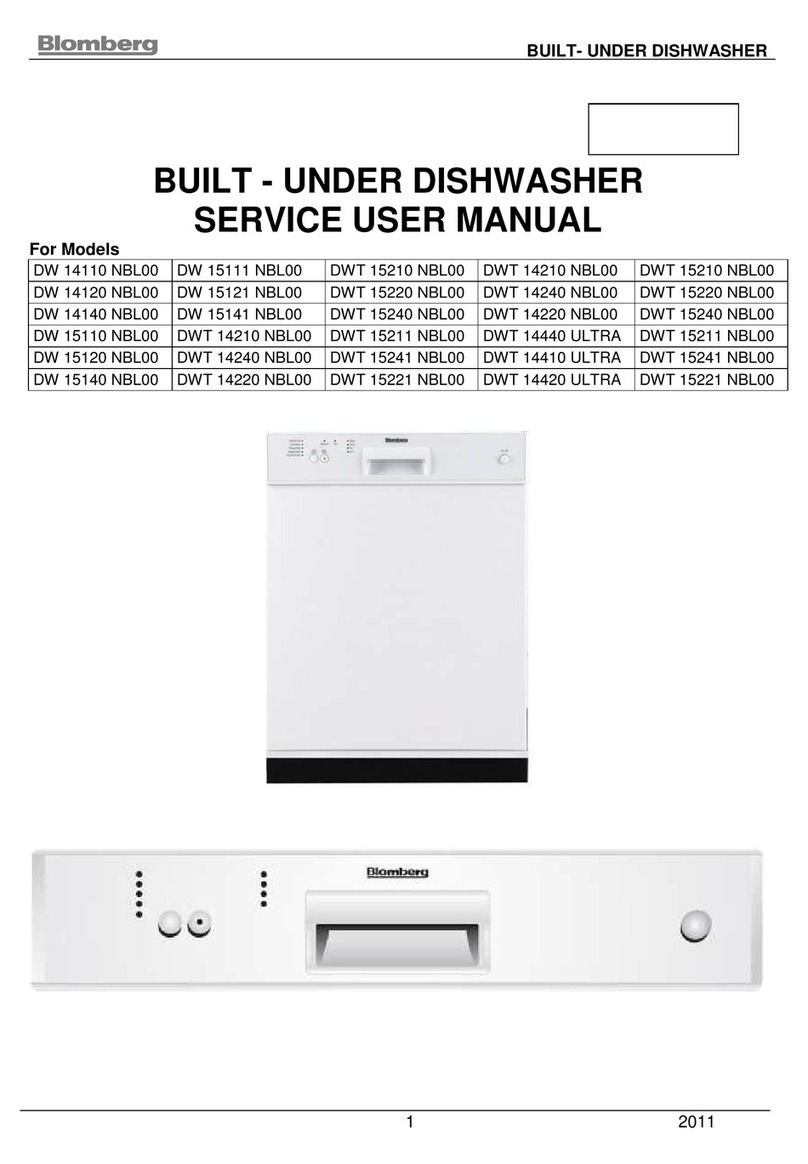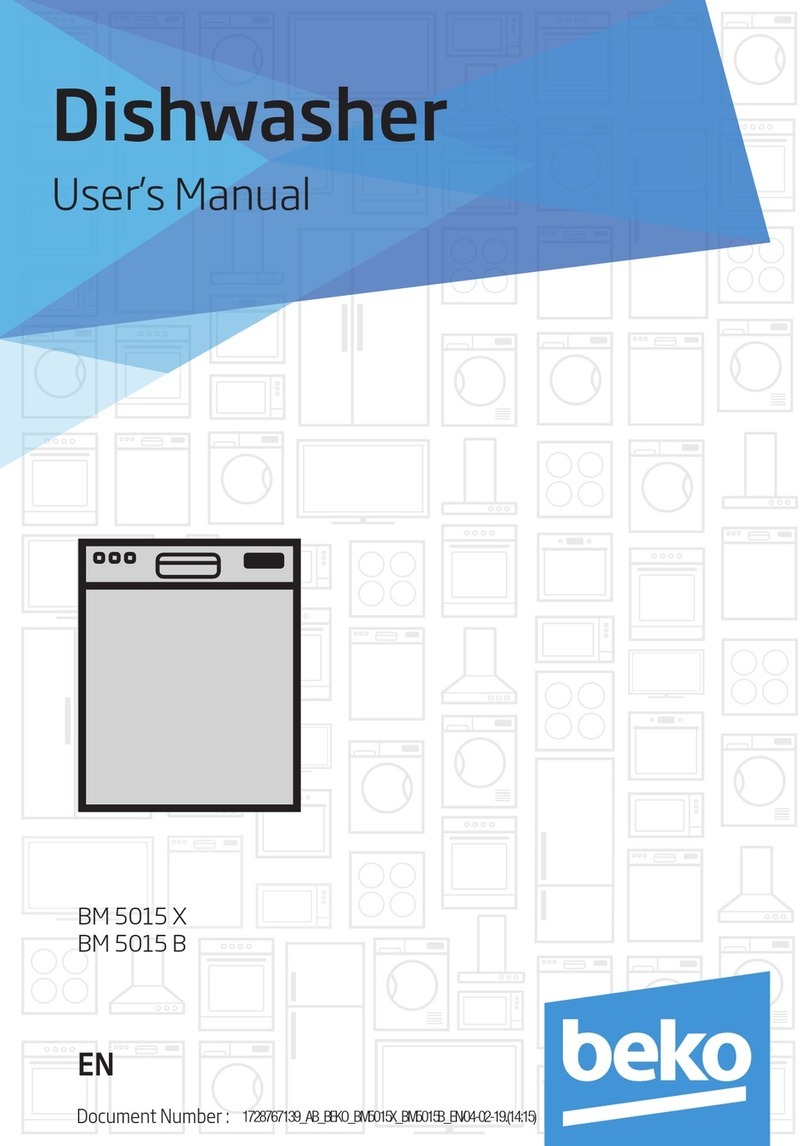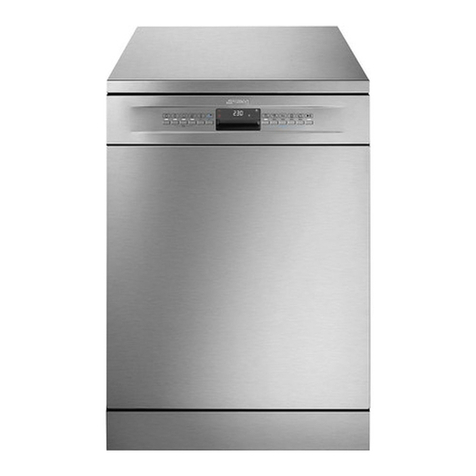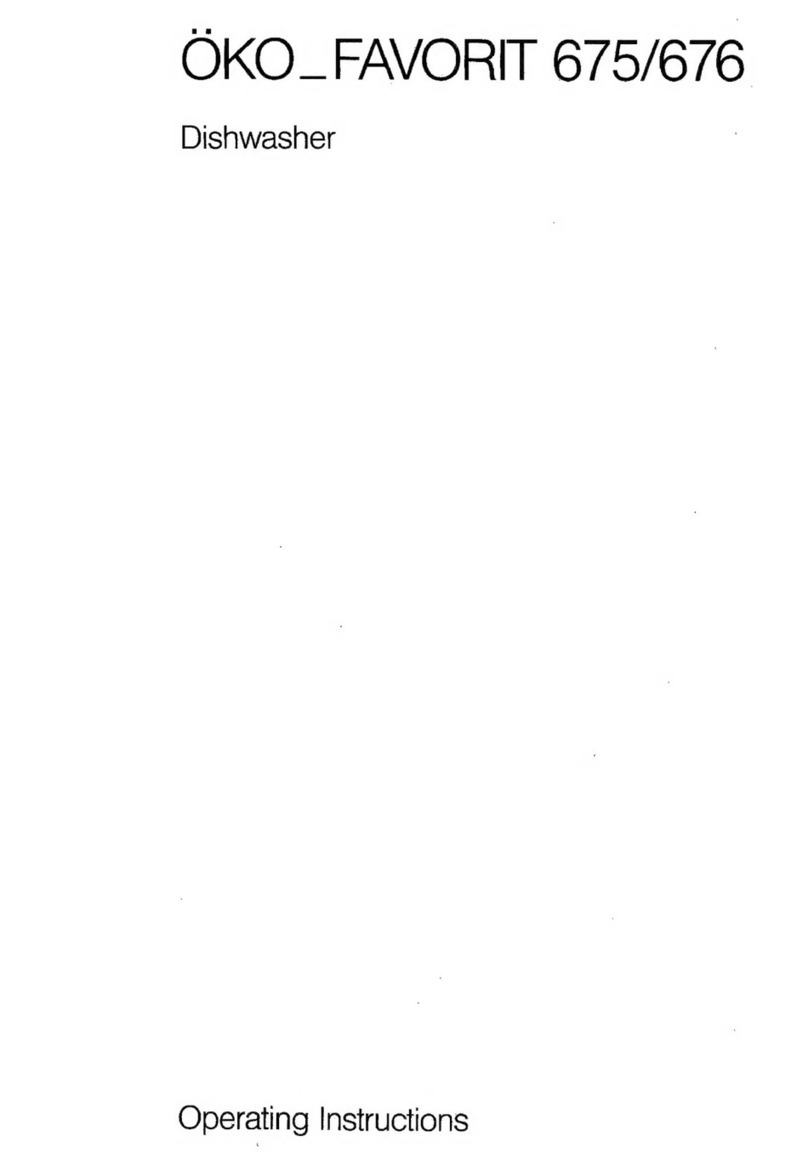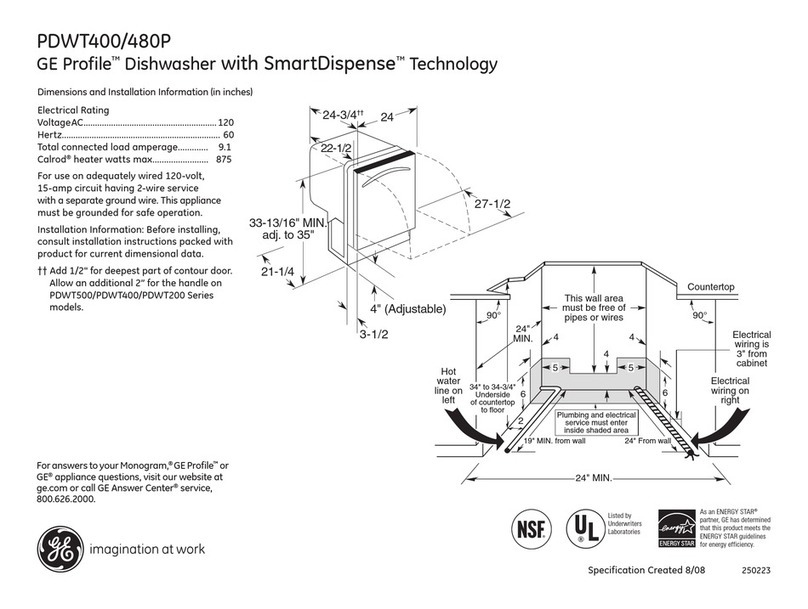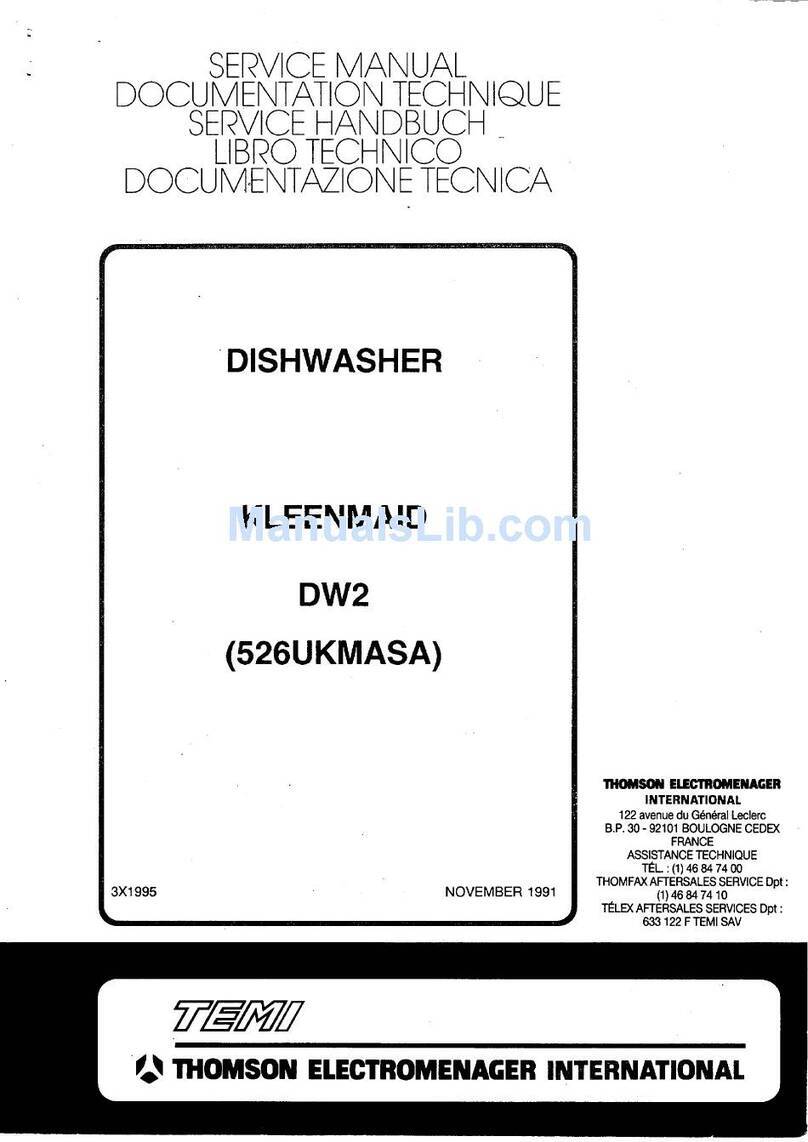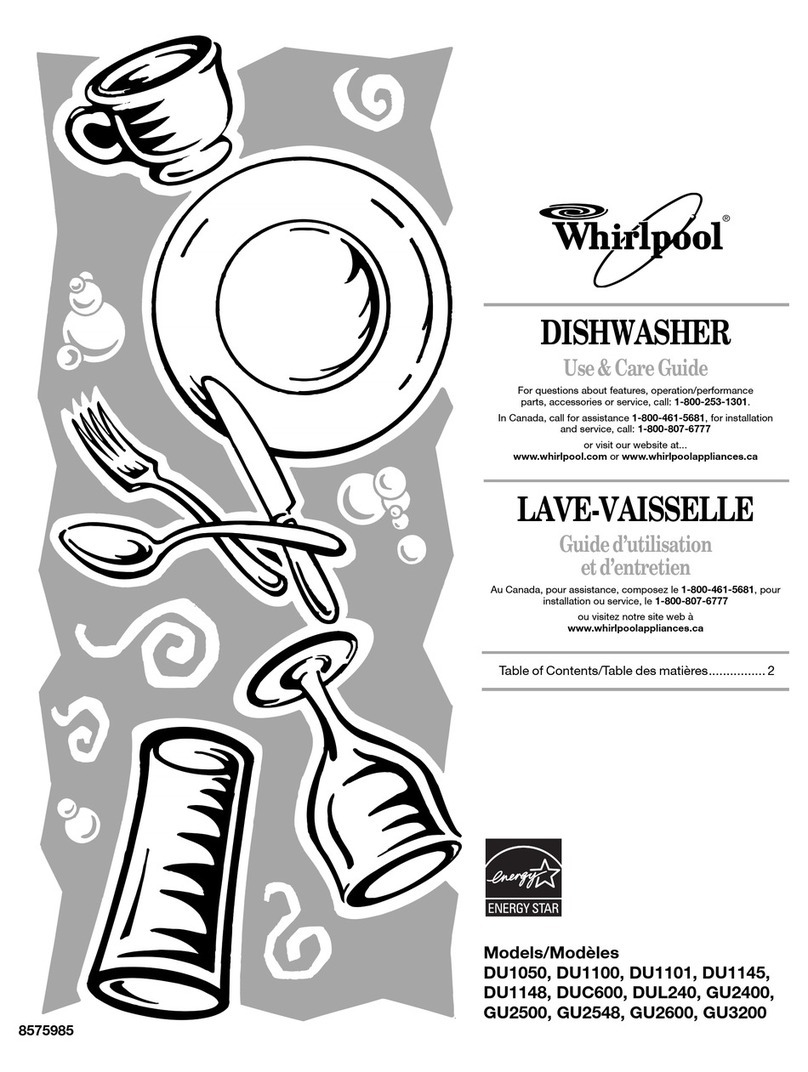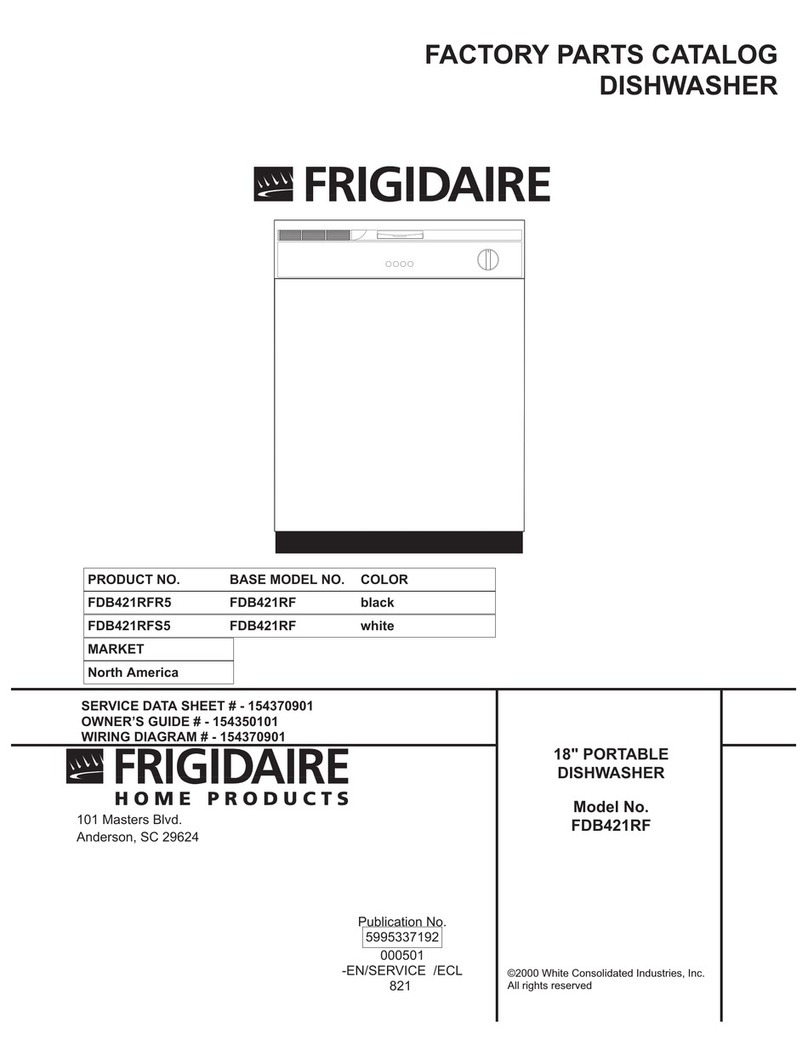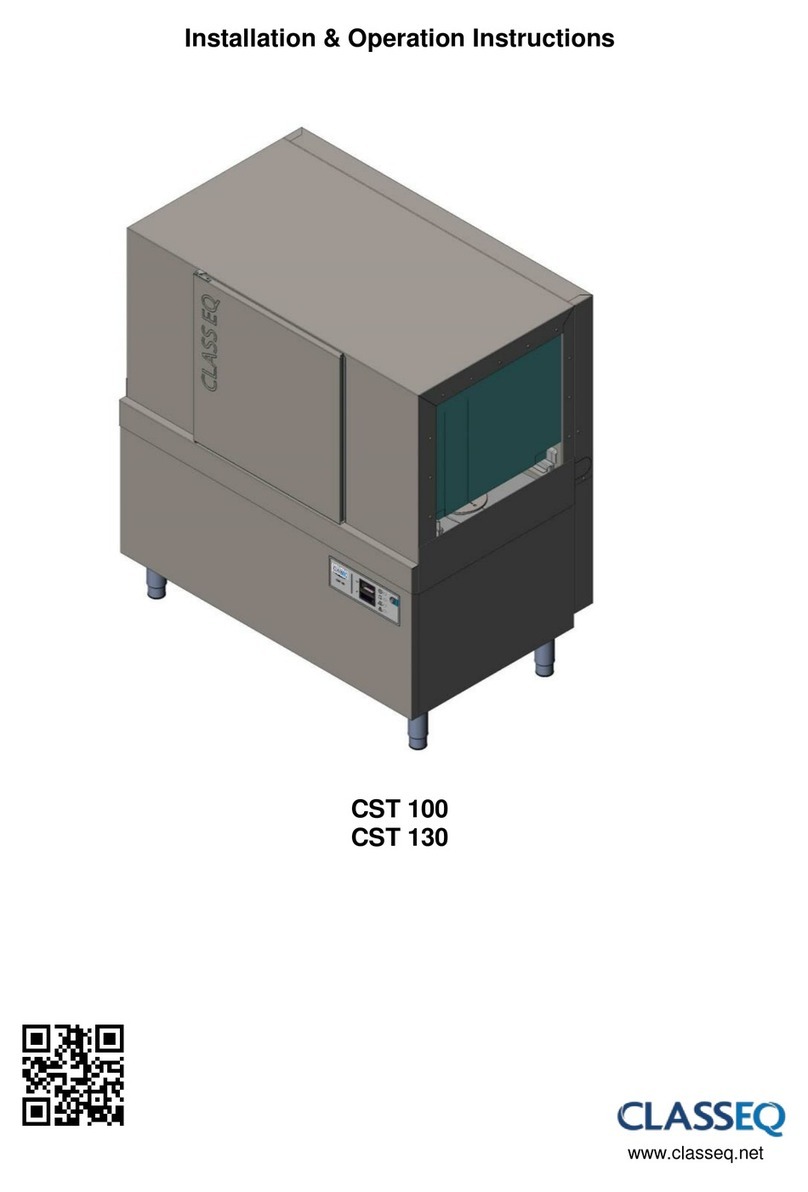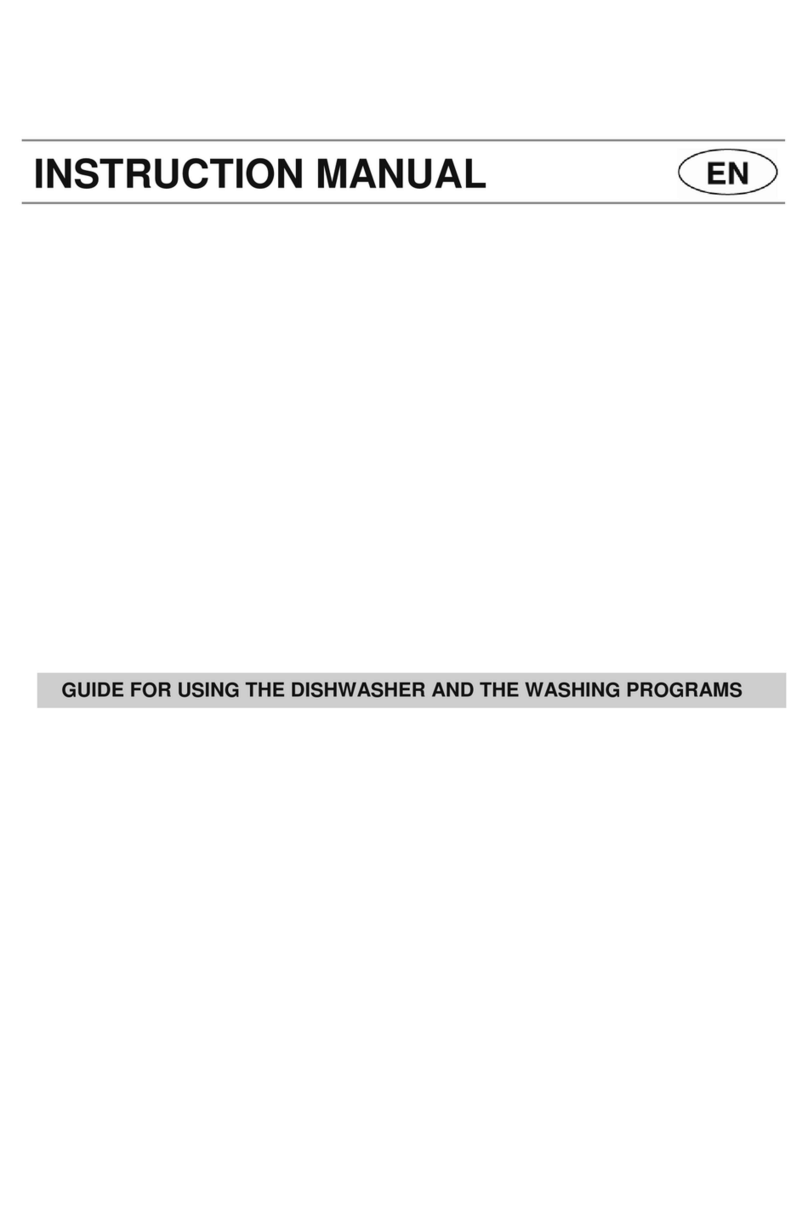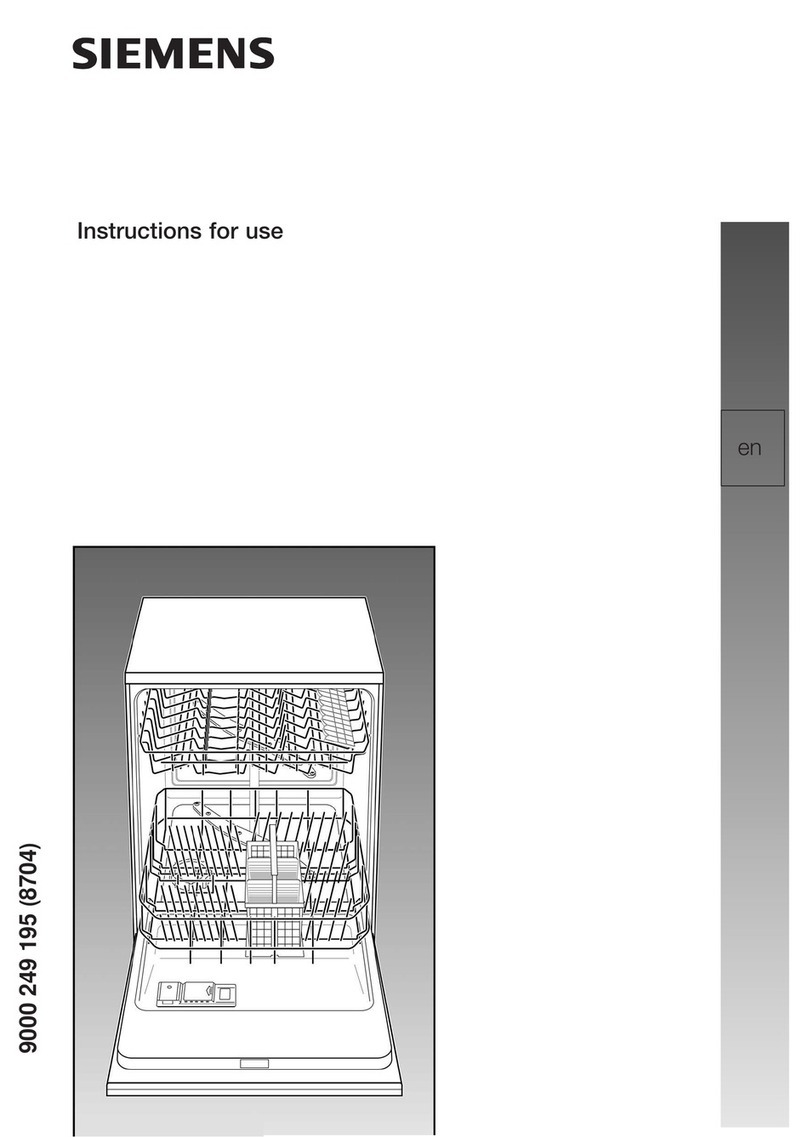12
PREPARATION
PREPARING THE MACHINE FOR USE
Prior to using the machine for the first time
• Check whether the electricity and water supply
specifications match the values indicated by the
installation instructions for the machine.
• Remove all packaging materials inside the machine.
• Fill the rinse aid compartment.
Detergent usage
Use a detergent specifically designed for use in domestic
dishwashers. You can find powder, gel, and tablet
detergents in the market that have been designed for
household dishwashers. Detergent should be put into
the compartment prior to starting the machine. Keep
your detergents in cool, dry places out of reach of
your children. Do not fill detergent into the detergent
compartment more than required; otherwise it may etch
your glasses as well as leaving undissolved detergent
in the dishwasher. Should you need more information
concerning the detergent you use, contact detergent
manufacturers directly.
Filling the detergent
compartment
1. Push the latch to open
the detergent container
as shown in image 1.
2. Detergent compartment
has level lines inside. It
is possible to measure
the right detergent
amount using these lines.
Detergent compartment
(A) can take 40 gm of
detergent. Open the
dishwasher detergent
and pour into the larger
compartment 25 gm if
your dishes are heavily
soiled or 15 gm if they
are less soiled.
If your dishes have
been kept dirty for a very long time, if there are dried
food wastes on them, and if you have fully loaded the
dishwasher, pour 5 gm detergent into the pre-wash
compartment (B) and start your machine.
You may have to add more detergent into your machine,
depending on the degree of soil and on the water
hardness level in your area.
Combined detergent
Detergent manufacturers also produce combined
detergents called “2 in 1”, “3 in 1” or “5 in 1” etc.
“2 in 1” detergents contain detergent or rinse aid.
When using “2 in 1” detergent make sure to check the
specifications of the tablet.
Other tablet detergents contain detergent + rinse aid +
various extra functions/additives.
Generally, combined detergents produce acceptable
results under certain usage conditions only. These
detergents contain rinse aid in preset amounts.
Points to consider when using these type of products:
• Always make sure to check the specifications of
the detergent you will use or whether or not it is a
combined detergent.
• Check if the detergent used is appropriate for the
hardness of mains water.
• Observe the instructions on packaging when using
such products.
• If detergents are in the form of tablets, never put them
into the interior section or the cutlery basket of the
dishwasher. Always put the tablets into the detergent
compartment in the detergent dispenser.
• Tablets produce good results for certain types of usage
only. If you are using this type of detergent, you need
to contact the manufacturer and find out about the
suitable conditions of use.
• When the conditions of use of such products and the
machine settings are appropriate, they ensure savings
in rinse aid consumption.
• Contact the detergent manufacturers if you are not
obtaining good wash results (if your dishes have
limescale and stay wet) after having used 2 in 1 or
3 in 1 detergents. The scope of warranty for your
machine does not cover any complaints caused by the
use of these types of detergents.
Recommended usage: If you want to obtain better results
while using combined detergents, add rinse aid into your
machine and the rinse aid setting to the lowest position.
Solubility of the tablet detergents produced by different
companies can vary depending on the temperature
and time. Therefore, it is not recommended to use these
detergents in short programs. It is more suitable to use
powder detergents and rinse aid in short programs.

























